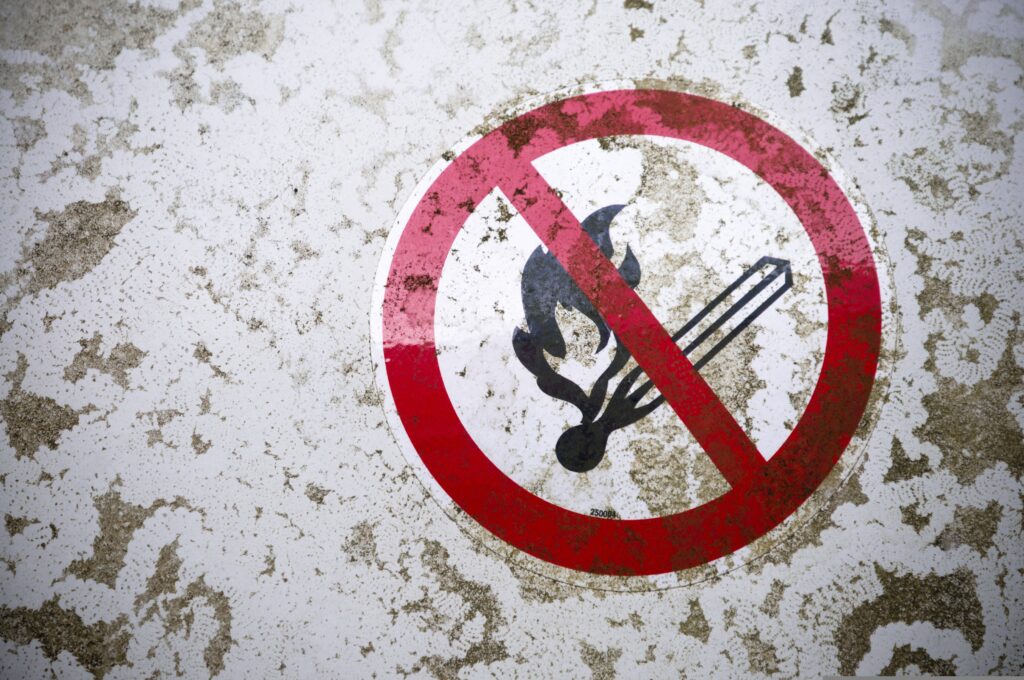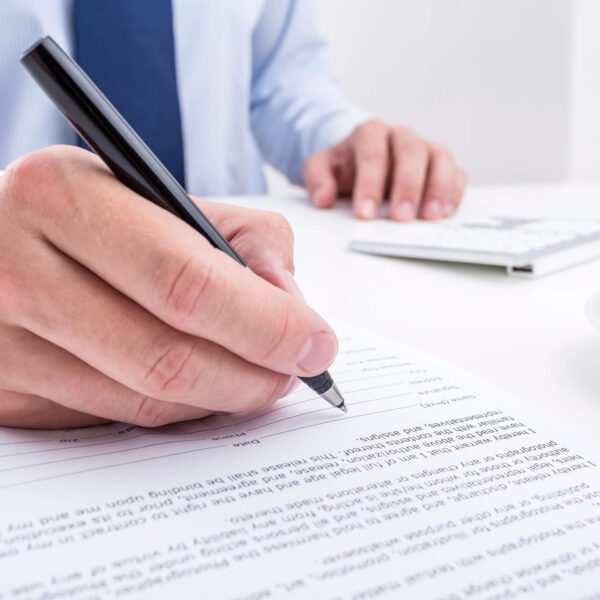PROCEDURES SUMMARY
1. The University
1.1. It is the responsibility of the University acting through administrative heads of units to:
1.1.1. provide a safe, healthy and secure working environment;
1.1.2. ensure regular inspections are made and take action as required to improve unsafe conditions;
1.1.3. ensure that health, safety and personal security considerations form an integral part of the design, construction, purchase and maintenance of all buildings, equipment and work processes;
1.1.4. provide first aid facilities where appropriate;
1.1.5. support supervisors and safety committees in the implementation of an effective health, safety and security programme;
1.1.6. ensure compliance with applicable legislation;
1.1.7. establish department or building safety committees;
1.1.8. communicate with the university community or affected groups about events or situations when potentially harmful conditions arise or are discovered;
1.1.9. ensure adequate resources are available to implement appropriate procedures.
2. The Supervisor
2.1. It is the responsibility of supervisory staff to:
2.1.1. formulate specific safety rules and safe work procedures for their area of supervision;
2.1.2. ensure that all employees under their supervision are aware of safety practices and follow safety procedures;
2.1.3. provide training in safe operation of equipment;
2.1.4. inspect regularly their areas for hazardous conditions;
2.1.5. correct promptly unsafe work practices or hazardous conditions;
2.1.6. be responsive to concerns expressed about personal security and investigate any accidents, incidents or personal security concerns which have occurred in their areas of responsibility;
2.1.7. report any accidents or incidents involving personal security to the appropriate University authority;
2.1.8. participate, if requested, on department or building safety committees.
3. Individual Students and Members of Staff and Faculty
3.1 It is the responsibility of individual students and members of faculty and staff to:
3.1.1. observe safety rules and procedures established by supervisory staff,
administrative heads of unit and the University;
3.1.2. be safety-conscious in all activities, be they work, study or recreation;
3.1.3. report as soon as possible any accident, injury, unsafe condition or threats to personal security to a supervisor or administrative head of unit;
3.1.4. use properly and care for adequately personal protective equipment provided by the University;
participate, if elected or appointed, on departmental or building committees.
4. Detailed Procedures
4.1 The University Health and Safety Committee works to achieve these objectives
by providing education and reviewing policies and procedures.
4.2 Department/Area/Building Safety Committees carry out the safety programs
their areas and make recommendations to ensure that the safety objectives of the University can be achieved.
4.3 The University’s health and safety authorities and Security Services assist departments to implement and maintain effective health, safety and personal security programmes, liaise with the regulatory authorities on behalf of the University and support the activities of the University’s Safety Committees.
5. Definitions
5.1 An administrative head of unit is a director of a service unit, a Head of an
academic department, a Director of a center, a Dean, an associate Vice President, the Registrar, the University Librarian, a Vice president or the President.
5.2 A supervisor is a person, not necessarily an administrative head of unit who
has been delegated supervisory responsibility for others working or studying at BUE.
Health and Safety program
Plan of action
1. Assignment of HAS duties to personnel as follows
One Safety Warden for each lab + one Faculty supervisor
Buildings are divided into floors and sections on each floor and given a letter designation
One Safety Warden is appointed for each section
One faculty member is appointed per floor
2. Skills to be imparted
First aid training for safety Wardens
Fire drills for everyone
Emergency evacuation
3. Supplies required
First aid kits in all labs/workshops
Fire extinguishers in labs/workshops and in hallways of buildings
Safety instructions in large lettering in labs/workshops, bilingual
Proper clothing to be worn in labs/workshops
Eye, hearing, hands and foot protection in labs/workshops
Clear instructions on how and when to use the labs/workshops safely
4. Documents to be prepared
Safety manual (to be handed to new employees, with an abridged manual for new students)
Emergency / Fire safety plan
Ergonomics manual (for safe use of computers and computer tables)
Emergency contact information (on and off campus) including police, ambulance, campus security, fire department, poison control, maintenance, etc.
Specific manuals would also be prepared for departments operating labs and workshops including:
Safe Work Procedures for Chemistry Labs,
Safe Work procedures for Electrical Labs,
Safe Work Procedures for Civil Engineering Labs,
Safe Work Procedures for Mechanical Engineering labs/workshops.
Safe Work Procedures for Petroleum Engineering Labs
These manuals would include sections on protective gear, waste management, regular inspection and emergency procedures.
5. Additional items
As per BUE policy, all University buildings, classrooms, labs and offices are designated non-smoking areas. Smoking is only allowed outdoors.
Health and Safety policies are renewed and enforced as follows:
Inclusion of HAS in orientation of new students and staff
HAS review at least once a year
Emphasizing HAS in some of the first year modules
HAS audit of the Campus, inside and outside of buildings to identify problem areas and propose remedial measures.
Safety Committees:
A university Health and Safety committee is formed , initially, to be replaced by faculty a committees in the future as faculties grow in size and facilities.
Organization Structure of a Faculty Health and Safety Committee
At the faculty level, The Dean is the administrative leader of the faculty and is ultimately responsible for all issues related to the faculty’s operations, personnel and workplace/employee safety related matters. As the administrative leader, the dean is responsible for:
establishing a faculty Health and Safety committee consisting of representatives of all employee units;
designating area supervisors for the faculty workplace environment;
appointing a safety program administrator to coordinate and support the safety initiatives within the faculty to provide a safe working environment for all employees;
maintaining safety training records for faculty personnel and students;
maintaining a minimum level of First Aid via designated staff trained to administer First Aid, and maintains First Aid kits in all labs and workspaces;
actively support supervisory staff and designates in the implementation and enforcement of all aspects of the safety policy
The Faculty’s Health and Safety Committee is appointed by the Dean and is mandated to carry out the safety programs within the faculty and makes recommendations to ensure that the safety objectives of the University can be achieved. This committee, headed by a faculty member, is comprised of faculty, staff and students from the various representative employee units making up the Faculty of Engineering staff.
The Area Supervisors are designated by the Dean. The responsibilities of Area Supervisors are outlined in the University Policy and include the following:
To formulate specific safety rules and safe work procedures for the area of supervision.
To ensure that all employees under their supervision are aware of safety practices and follow safety procedures.
To provide training in the safe operation of the equipment.
To regularly inspect their designated areas for hazardous conditions.
To promptly correct any unsafe work practices or hazardous conditions.
To be responsible to concerns expressed about personnel security and investigate accidents, incidents or personal security concerns which occur in their area of responsibility.
To report any accidents or incidents or safety issues to the Dean and Health & Safety Committee Chair.
The Health and Safety Programme Administrator is appointed by the Dean and acts as the faculty’s administrator for safety-related matters. These matters include the development, coordination and implementation of workplace inspection and safety training programmes for faculty’s employees (i.e. faculty, staff and teaching assistants) as well as students. The responsibilities of the Safety Programme Administrator are to support Area Supervisors and the Faculty’s Safety Committee in the implementation of the Faculty’s Safety Policy.
Health and Safety Policy
The University is determined to create a strong culture of health, safety and wellness awareness among the faculty, staff, students and visitors by implementing an effective Health and Safety Programme.
It is the responsibility of the University to be aware of and comply with all workplace safety acts and related legislations as a minimum acceptable standard in order to protect or improve the health, safety and well-being of faculty, staff, students and the environment.
It is the responsibility of the University to ensure that all hazards are identified and eliminated or guarded against by maintaining proper standards of maintenance of plant and equipment, implementing effective safety practices and conducting regular inspections.
It is the responsibility of the University to ensure that faculty, staff and students receive education and training on safe work practices, hazard reduction and emergency situation procedures.
It is the responsibility of all faculty, staff and students to learn and follow proper safety procedures in each area and to observe all regulations pertaining to their work for the prevention of accidents and maintenance of a safe and healthy work environment.
It is the responsibility of supervisors to ensure the safety of staff or students under their supervision by conducting operations in a safe and efficient manner, performing regular inspections and reporting any accidents or incidents.
It is the responsibility of all faculty, staff and students to identify and report to supervisors and/or members of the safety committee all potentially hazardous conditions and to avoid any action or omission that could jeopardize their own health or safety or that of any other individual or the environment.Safe-work Procedures in Chemistry Labs
1. Personal Protective Equipment
Responsibilities
Supervisor’s Responsibilities
The supervisor must ensure that appropriate personal protective equipment is:
Available to workers
Properly worn when required
Properly cleaned, inspected, maintained and stored.
Worker’s Responsibilities
A worker who is required to use personal protective equipment must:
Use the equipment in accordance with training and instruction
Inspect the equipment before use
Refrain from using the equipment outside the work area where it is required if to do so would constitute a hazard
report any equipment malfunction to the supervisor or employer
a worker who is assigned responsibility for cleaning, maintaining or storing personal protective equipment must do so in accordance with training and instruction provided.
Eye and Face Protection
Should be used when there is a hazard from:
flying particles
liquid chemicals
acids and caustic liquids
gases and vapors
injurious light
chipping, grinding, welding
1.2.1. Face shield
Use face shield when working with a high volume of chemicals. Wear the Safety
Glasses under the Face Shield.
1.2.2. Eye Protection
Use special Safety Glasses or Goggles to protect against injurious light, such as
the glasses made to protect eyes against laser radiation. Use Chemical Goggles
when there is a risk of exposure to toxic or irritant fumes.
Adequate eye protection is required for all individuals in the laboratory. Do not remove your eye protection until you have physically left the lab room. The following types of eye protection are acceptable:
Protective glasses should meet the requirements of ANSI Standard Z87.1- 1989, Practice for Occupational and Educational Eye and Face Protection, or equivalent.
Where exposure to toxic or irritating fumes could be a problem, the best form of eye protection is safety goggles that form a tight seal to your face.
A full-face shield is highly recommended when there is a risk of explosion or splashing, or with combustion and high temperature reactions.
If there is a risk of face injury, suitable face protection must be worn.
Face protectors and non-prescription safety eyewear must meet the requirement of relevant Standards such as (a) Standard CAN/CSA-Z94.3-92, Industrial Eye and Face Protectors, or (b) ANSI Standard Z87.1-1989, Practice for Occupational and Educational Eye and Face Protection, or European equivalent Standards.
1.2.3. Bifocal, trifocal and corrective prescription glass lenses
Protective glasses and face shields that cover corrective prescription lenses are available commercially
Prescription safety eyewear must meet the requirements of relevant Standards for industrial eye and face protectors.
Bifocal and trifocal glass lenses must not be used if there is danger of impact unless they are worn behind impact-rated goggles or other acceptable eye protection.
1.2.4. Contact lenses
Contact lenses can be a hazard and should not be worn in the lab.
1.3. Body Protection
Use appropriate skin, hand, foot or body protection if a worker is exposed to a substance or condition which is likely to puncture, abrade or otherwise adversely affect the skin or be absorbed through it.
If there is a danger of injury, contamination or infection to a worker’s hands, arms, legs, or torso, the worker must wear properly fitting protective equipment appropriate to the work being done and the hazards involved.
1.3.1. Gloves
Use gloves when there is a risk of cutting materials, working with extreme
temperature, chemical burns, hazardous material skin absorption.
Depending on the procedure to be carried out, different types of gloves must
be available in the laboratory. The gloves should “fit” the chemical.
Check for appropriate: glove material, permeation rating and breakthrough
time.
Asbestos gloves should not be used. If any are found, they should be replaced.
Gloves are made from a variety of materials which vary in their permeability and wear resistance.
Disposable gloves are made of PVC, latex, nitrile, and combinations of the aforementioned. These gloves are for general use and have low abrasion resistance.
More resistant, impermeable, reusable gloves are made from butyl rubber, nitrile or neoprene.
Nitrile gloves are highly resistant, give maximum protection from liquid chemicals. Thin Nitrile Gloves (purple) are good for general use; Heavy-duty Nitrile Gloves (green ) are for heavy volume of chemicals, also for spill clean-up. Rubber Gloves have good chemical resistance and load abrasion resistance. Neoprene Gloves are almost impermeable to regular solvents and fairly abrasion resistant. Kevlar Gloves are cur resistant for handling glassware.
Use Heat-Resistant Multi-Composite Gloves to protect high or low temperatures or special procedures.
1.3.2. Lab Aprons or Lab Coats
The strength and permeability of aprons depend on the materials used.
Aprons should be fire-resistant, chemical resistant and easily washed.
Flammable fabrics should be avoided.
Lab coats should be made of strong fabric and must be able to be removed quickly in case of accidents. They must be long enough to protect the legs. Lab coats exposed to harmful chemicals should not be worn in public areas.
1.3.3. Footwear
Worker’s footwear must be of a design, construction and material appropriate to protection required.
To determine appropriate protection the following factors must be considered: slipping, uneven terrain, abrasion, ankle protection and foot support, crushing potential, temperature extremes, corrosive substances, puncture hazards, electrical shock and any other recognizable hazard. If a determination has been made that safety protective footwear is required to have toe protection, metatarsal protection, puncture resistant soles, dielectric protection or any combination of these, the footwear must meet standards requirements. Footwear for chemistry laboratory work:
Substantial shoes must be worn and should cover the entire foot.
Open-toed shoes and sandals must not be worn in the laboratory.
Safety shoes or foot guards may be required under certain circumstances (e.g., when moving compressed gas cylinders).
When cleaning up floor spills wear plastic foot covers.
2. Laboratory Waste Disposal
2.1 Introduction
Waste disposal requires well-defined procedures to prevent exposure to hazardous
materials. This procedure describes the methods for safe disposal of:
Chemical Waste
Biohazard Waste
Radioactive Waste
Laboratory Glass Waste
Waste Oil
Waste Batteries
2.2 Prohibition
The following are prohibited or restricted wastes and should not be discharged to the sanitary sewer:
Flammable and explosive waste
High temperature waste (above 65 degree Centigrade)
Corrosive waste (pH lower than 5.5 or higher than 12)
Pathogenic waste
Radioactive waste (exceeding radioactivity limitations established by European nuclear safety commissions)
Waste with BOD > 500mg/l
Waste with TSS 600 mg/l
Waste with oil and grease
Phenols
Chlorophenols
Bezen
Ethylbenzen
Toluene
Xylene
Polycyclic aromatic hydrocarbons
Metals
Other inorganic contaminants (cyanide, sulphide, sulphate)
Waste capable of producing air contaminants
Waste capable of producing obstruction/interference with sewage facility operation
2.3. Responsibilities
Principal investigators, supervisors, technicians and students must be familiar with current waste disposal procedures for chemical, biohazardous, pathological and radioactive substances handled in their respective areas.
Supervisors are responsible :
For ensuring that all employees are trained and familiar with these disposal procedures
That all laboratory procedures are in conformance with these requirements
2.4 Other special waste disposal
2.4.1. Glass Waste
It is the responsibility of lab personnel to ensure that glass waste is packaged
safely and that full containers are taken to the building’s designated area for
pick-up and disposal by the department responsible.
Glass waste containers must not be used for contaminated sharps and
needles. These materials are handled separately and the special procedures
for their disposal must be followed. Contaminated glass waste may only be
disposed of using containers if the material has been decontaminated by an
appropriate method.




















